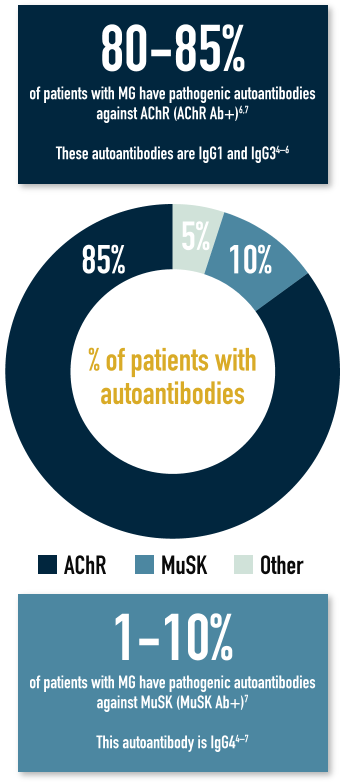is characterised by impaired synaptic transmission
and damage at the neuromuscular junction (NMJ)1,2
Acetylcholine (ACh) binds to AChRs at the NMJ, initiating a cascade that ultimately signals muscle contraction3,4
MuSK contributes to the high-density clustering of AChRs at the NMJ, resulting in increased
efficiency of
signal transduction3,4
that inhibit normal AChR or MuSK function5-7
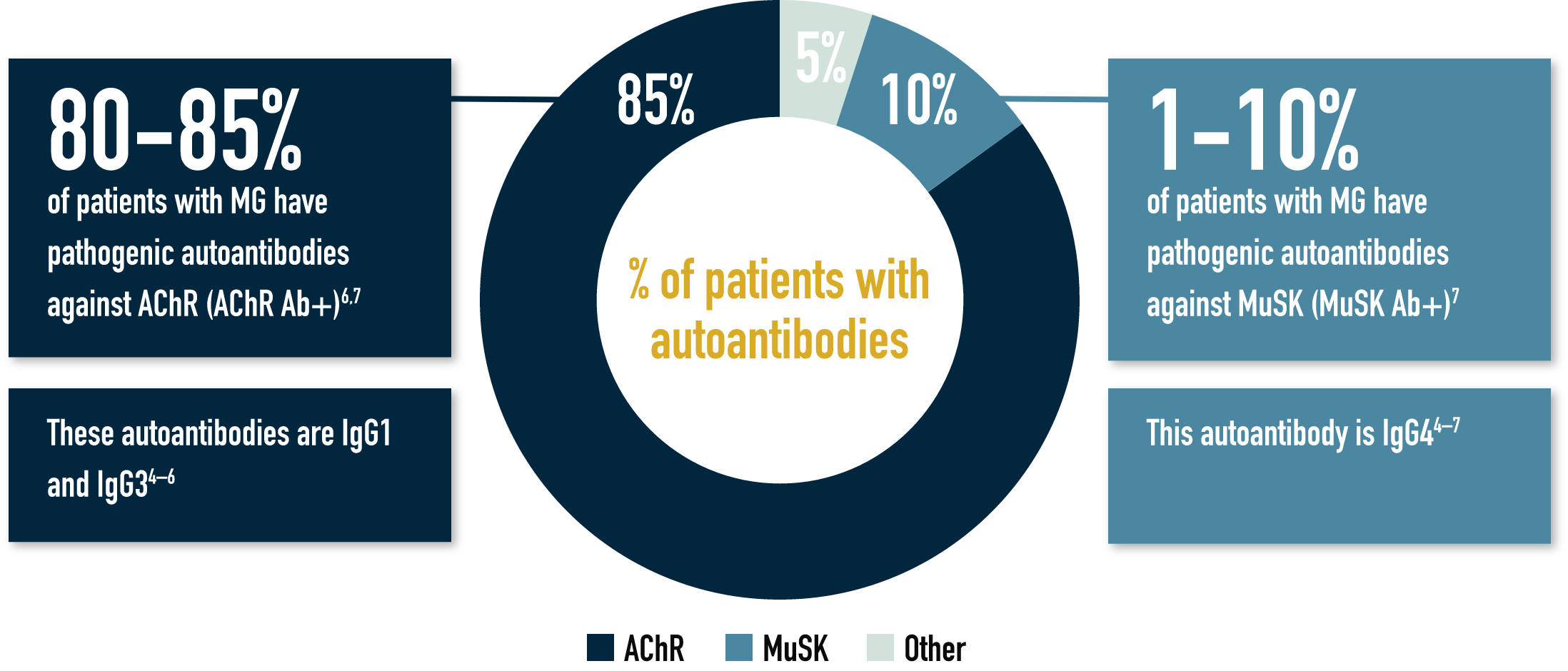
MG pathophysiology differs depending on which autoantibody is present6,7
IgG1 and IgG3 autoantibodies damage the NMJ through mechanisms such as functional blockade of AChRs
(a), cross-linking or
internalisation of AChRs (b) and
complement activation (c)3,7,8
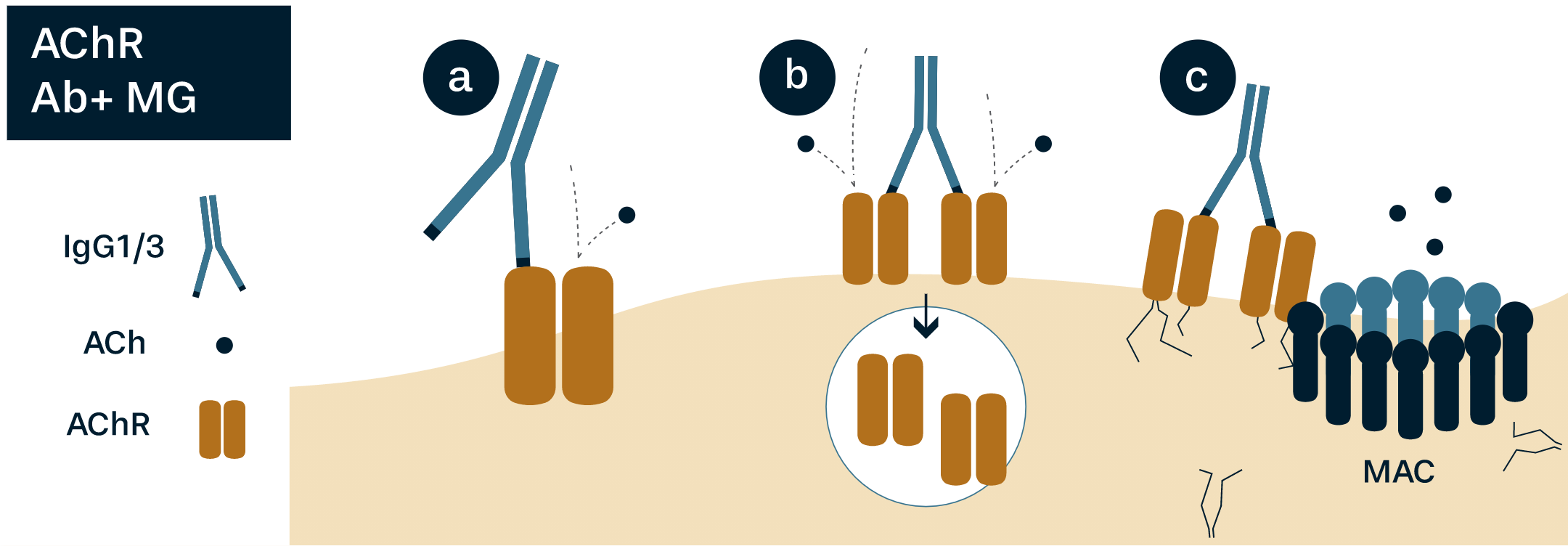
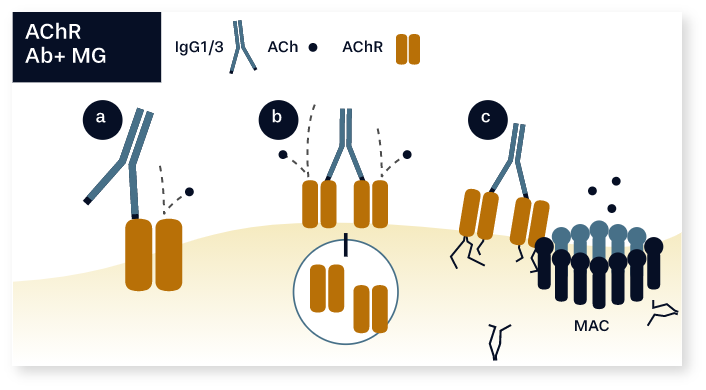
C5 is a key protein involved in downstream complement activation, leading to the formation of the
membrane attack complex
(MAC), which results in NMJ destruction, AChR loss,
and subsequent impaired synaptic transmission3,9

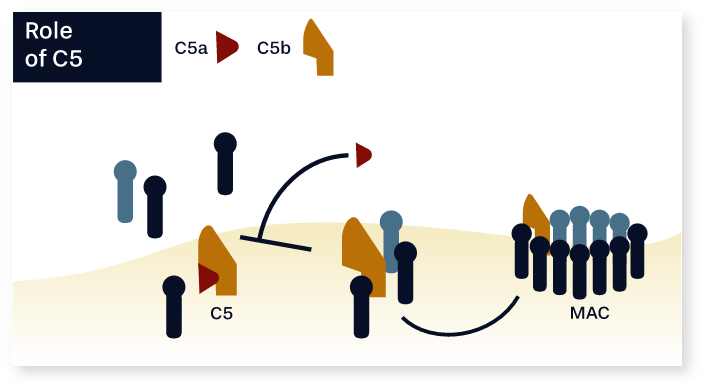
IgG4 autoantibodies cause progressive loss of AChRs at the NMJ and, ultimately, synaptic failure by
blocking activation of MuSK (d)
and inhibiting AChR clustering (e), without engaging
complement3,6,10
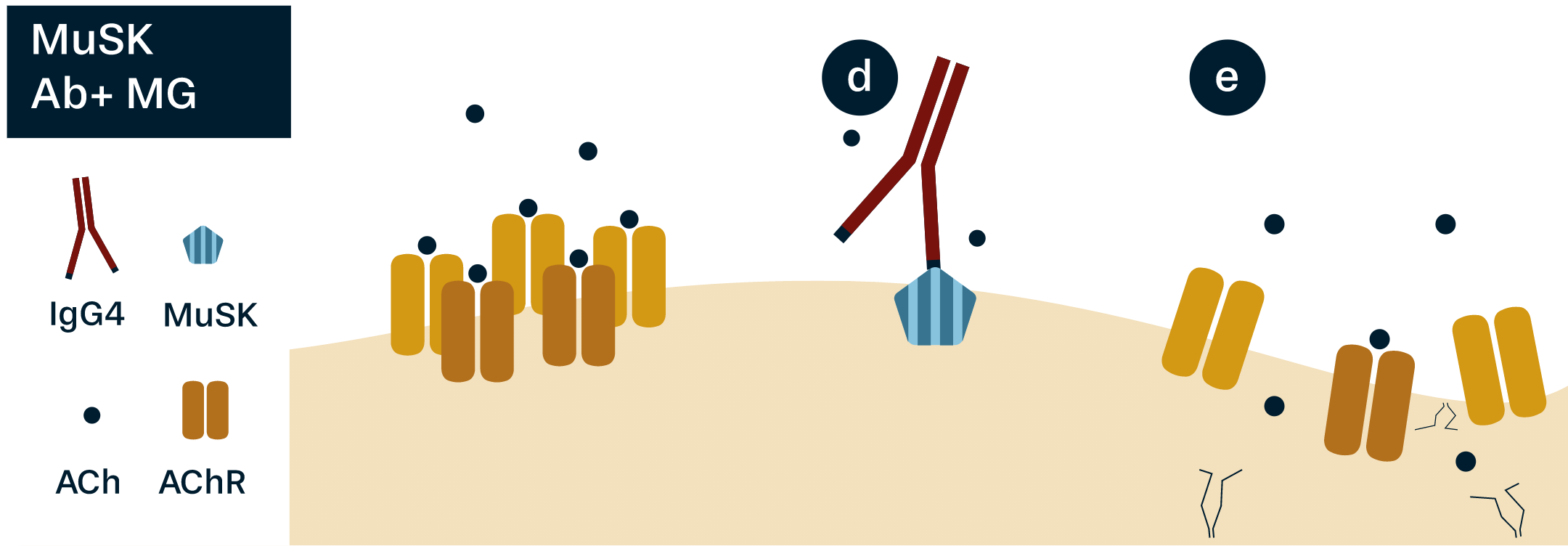

FcRn is part of a natural salvage mechanism that recycles autoantibodies back into circulation,
preventing their degradation in the
lysosome. By binding to AChR and MuSK IgG
autoantibodies, FcRn allows their pathogenic effects to continue11–13
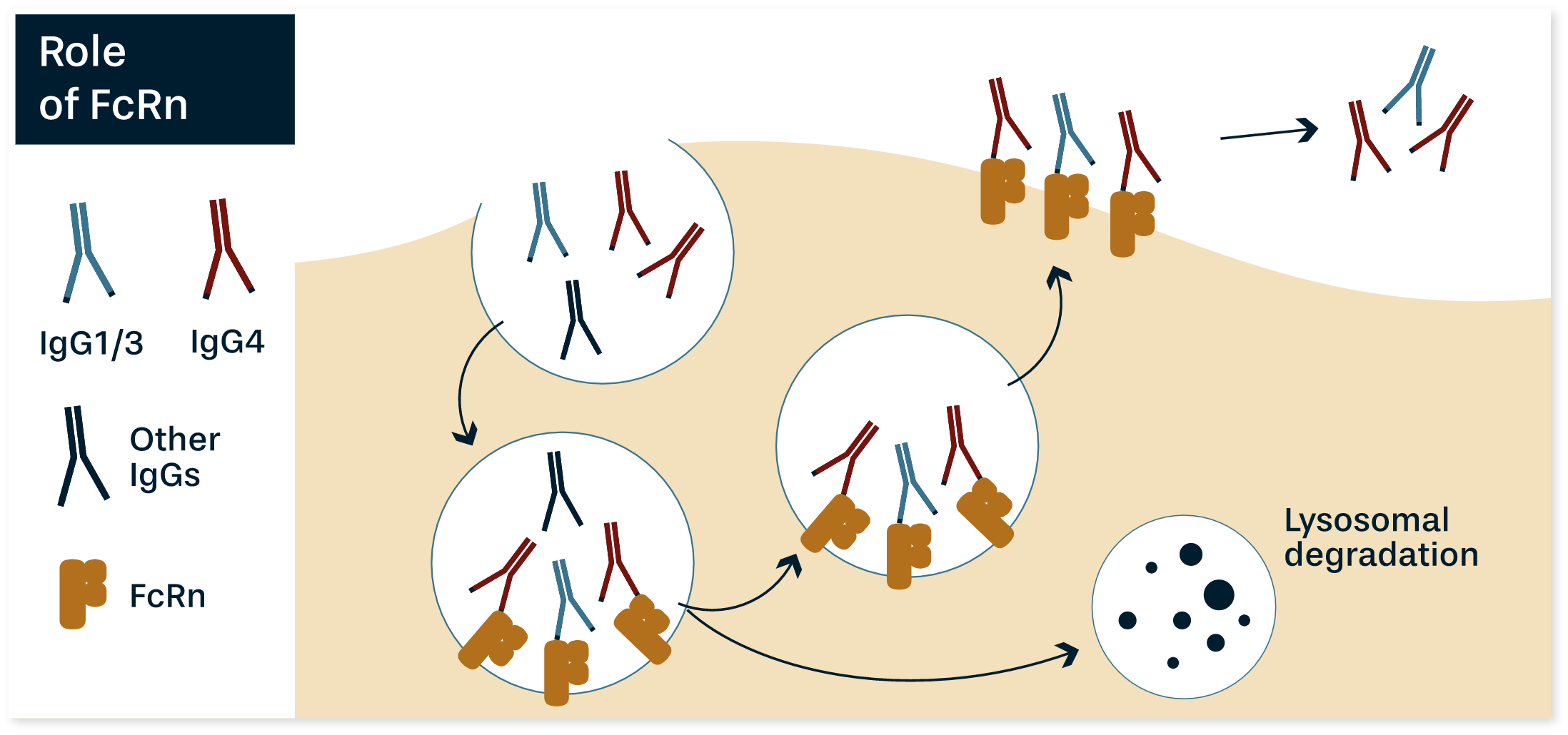
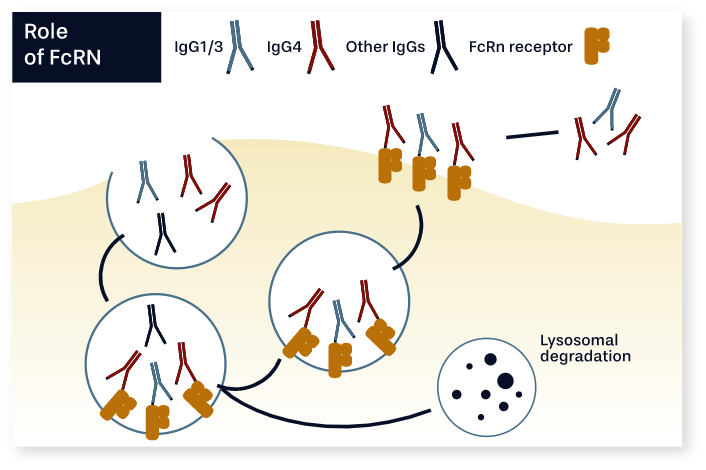
References
